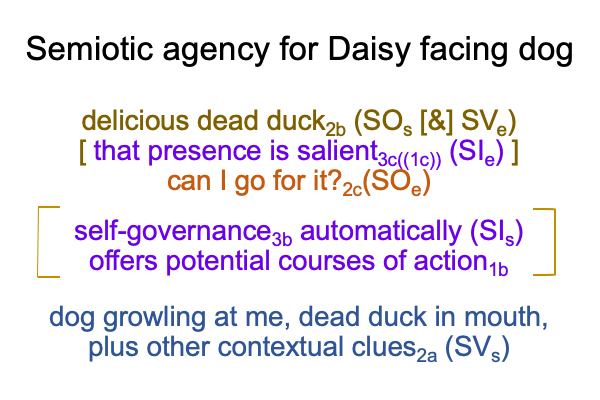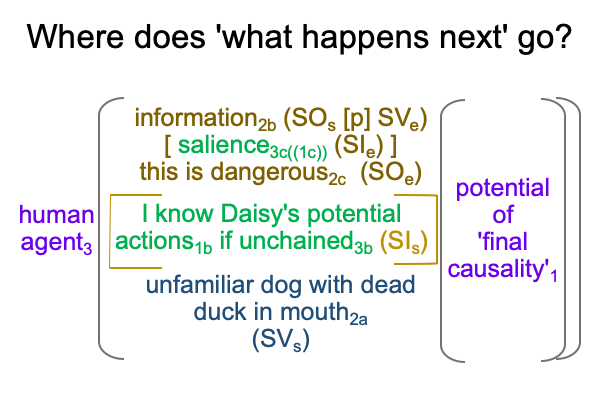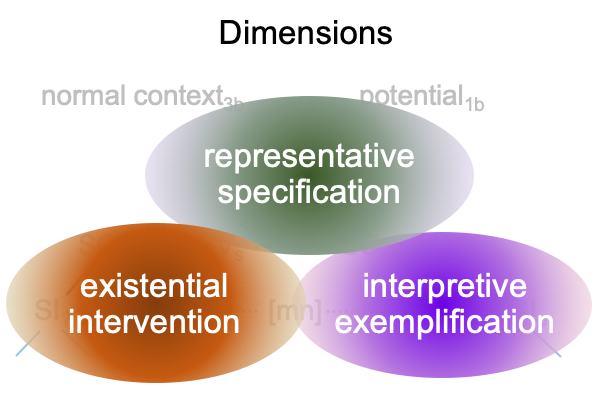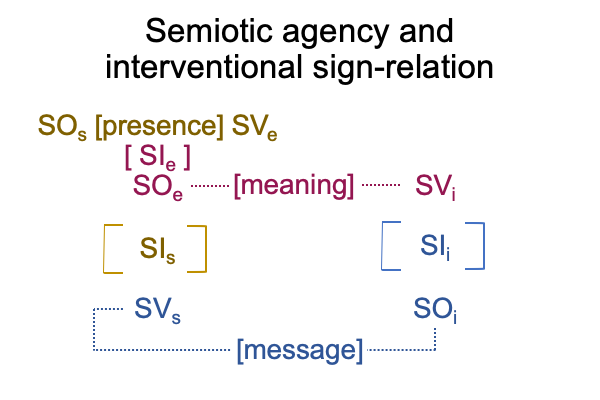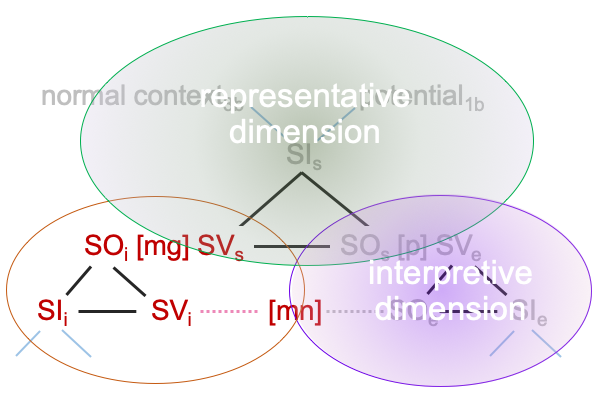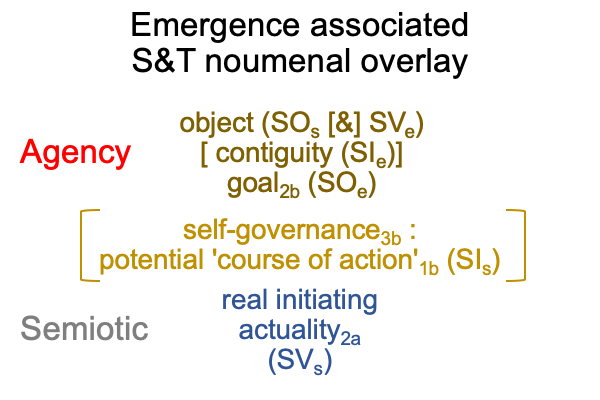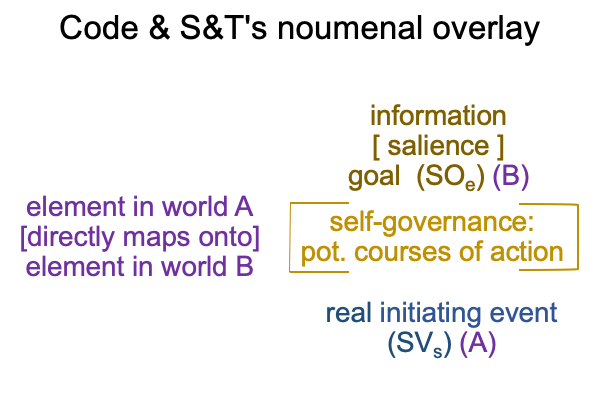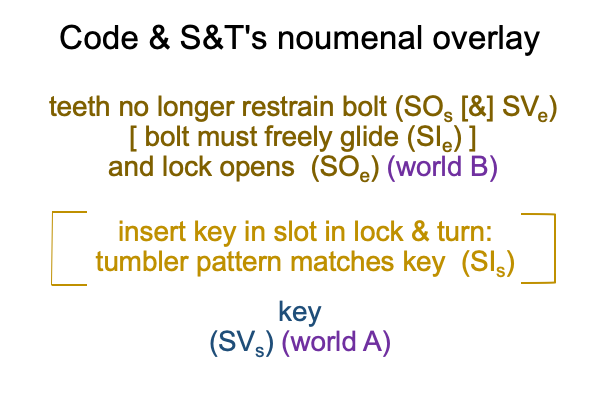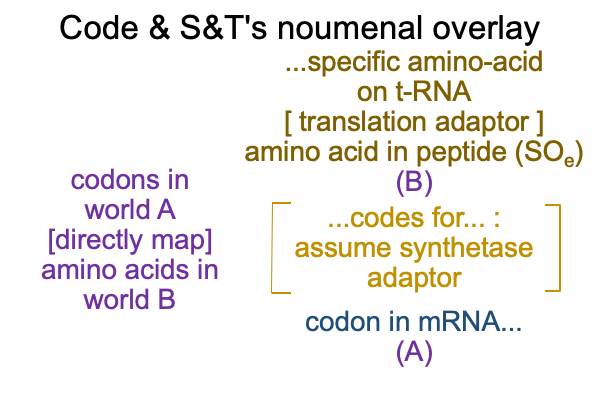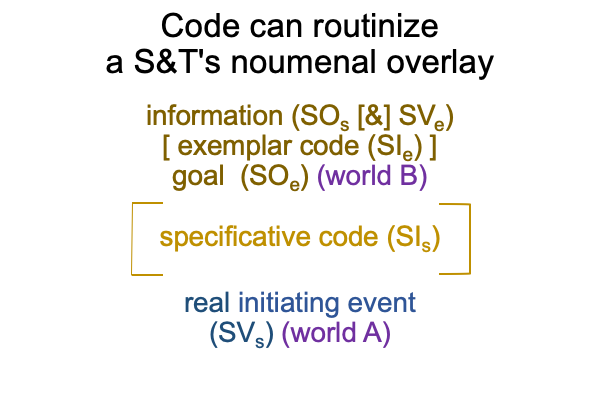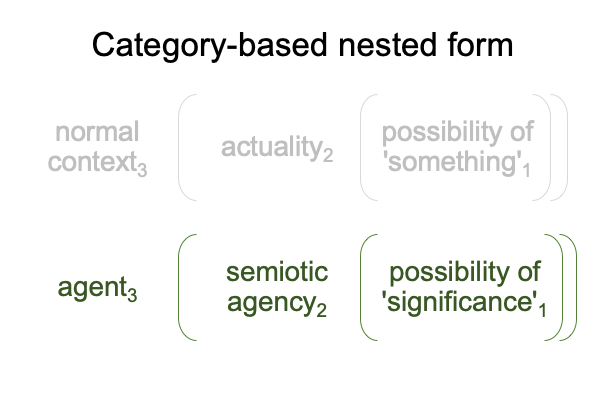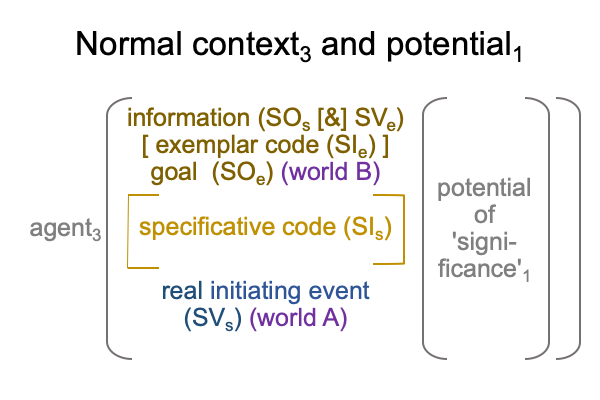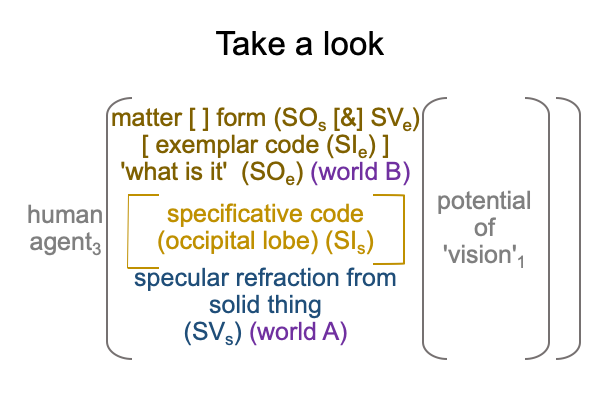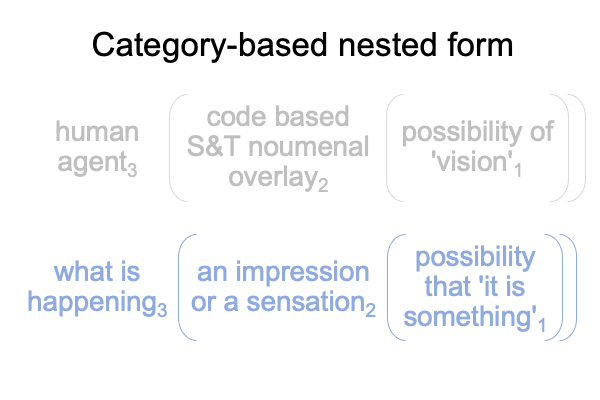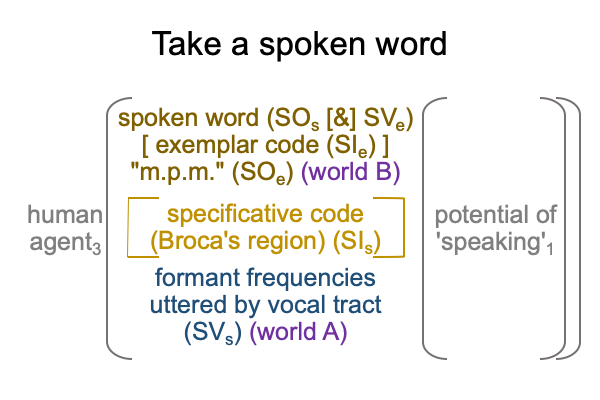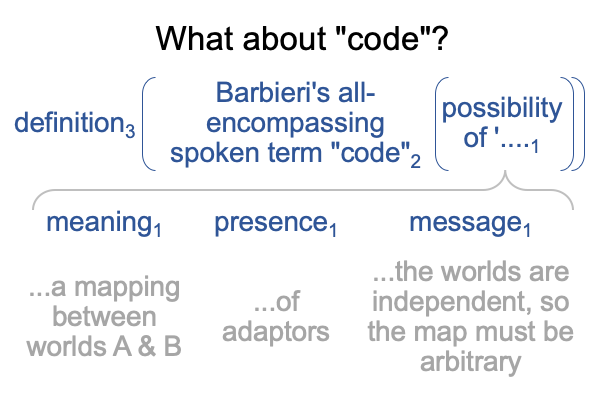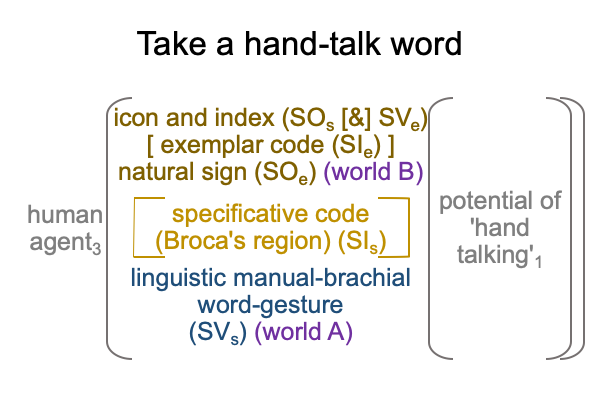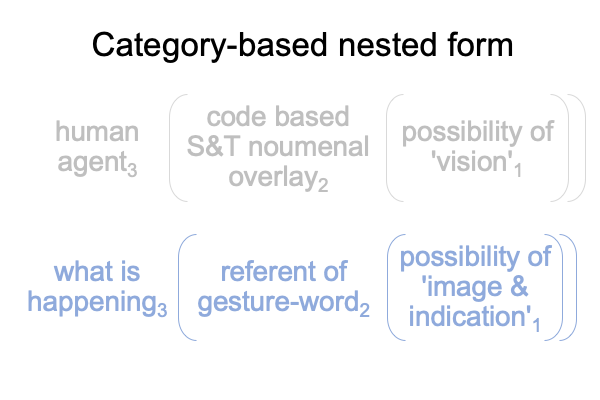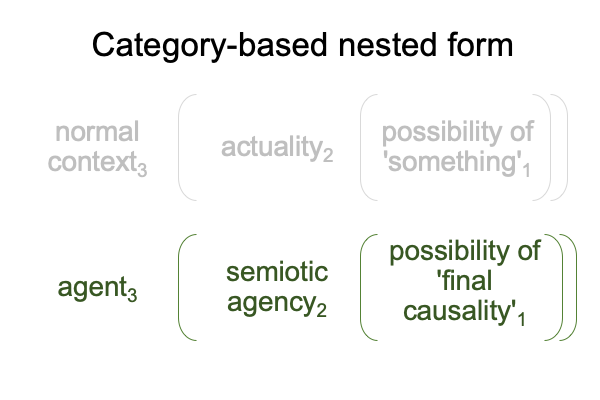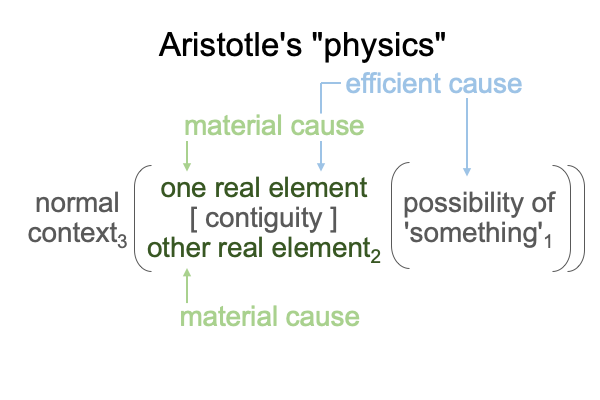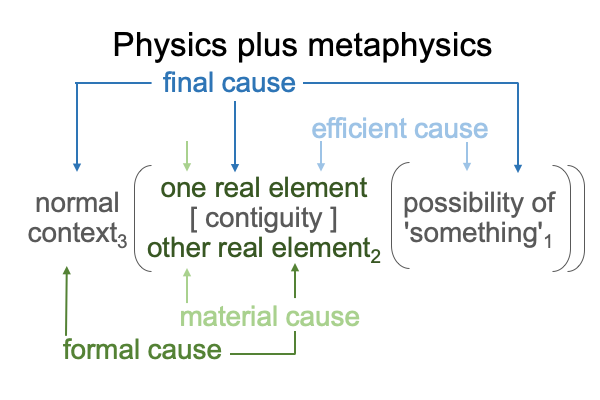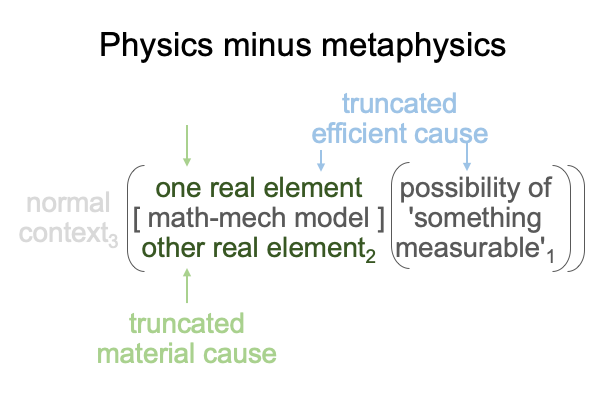Looking at Hongbing Yu’s Chapter (2024) “…Danger Modeling…” (Part 5 of 7)
0795 Those are two good questions.
Section 17.3 offers a clue in how to address the second question. The author produces a figure for the growth of signs by fractal extension of each corner of a sign-triangle.
0796 Here is my version of Figure 17.2.
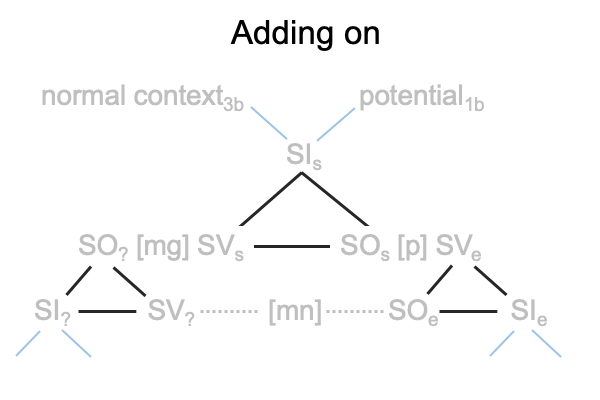
0797 At the top, a specifying sign interpretant branches into the situation-level category-based nested form, reflecting how the sign-interpretant anchors into both thirdness and firstness. This corresponds to the representative dimension. Because normal contexts3 and potentials1 are not actualities2, they3b((1b)) cannot be observed and measured. They3b((1b)) are not phenomena. So, they3b((1b)) must be explained. Plus, they3b((1b)) scaffold back into the one interscope as elements on the situation level.
0799 For the corner on the right, the situation-level actuality stands as a dyad, SOs [presence] SVe. This occurs in the interpretive dimension. SVe stands for its SOe in regards to its SIe. Both the SOe and the SIe are located on the perspective level. The SIe branches into the perspective-level normal context3c and potential1c. These3c((1c)) scaffold back into the one interscope as elements on the perspective level.
0800 For the corner on the left, the content-level actuality should stand as a dyad, SO? [message] SVs. Unfortunately, fractal extension of the specifying sign-relation implicates a sign-relation that does not appear in semiotic agency. And, this makes me want to start a conspiracy theory. Exactly who owns and operates this missing sign-relation, if not semiotic agency?
0801 Just kidding.
This sign-relation may be missing, simply because it does not appear in semiotic agency.
And that makes me wonder, “What makes danger modeling so difficult?”
Oh, it must be because a sign-relation is in play that does not belong to semiotic agency.
0802 Hmmm. Let me think about this.
This sign-relation has to be missing because it connects the perspective level and the content level of a three-level interscope. That is definitely different from the specifying and exemplar sign-relations.
Another odd feature is that the missing sign-relation shares two contiguities, one with the specifying sign-vehicle on the content level (corresponding to [message, mg]) and one with the exemplar sign-object on the perspective level(corresponding to [meaning, mn]).
One more feature is that the missing sign-interpretant occurs on the content-level and so branches into the content-level normal context3a and potential1a.
0803 Finally, this missing sign-relation is located in the existential dimension.
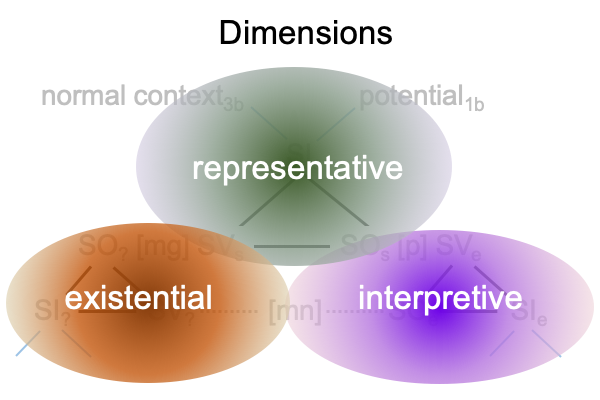
0804 Yeah, “the existential dimension” sounds a lot more dangerous than “the representative or interpretive dimensions”.

